Deploying WordPress on CWP manually gives you control over the setup process. This guide walks you through the step-by-step process to manually install WordPress on your CWP server.
Prerequisites: #
This guide expects that you have WordPress website files locally on your computer and you want to deploy them on your CWP server. If you want install fresh WordPress on the server, please check this guide
Before you begin, ensure the following:
- CWP installed on your server.
- A domain or subdomain set up on your CWP server. Here is how to
- A database and user created for WordPress. Here is how to
Step 1: Log in to CWP user panel using these steps #
Step 2: Create a MySQL Database if you have not. #
- You can check these steps on how to do that. Ensure to save the database name, username and password. You will need them later in step 5 of this guide.
- While on your user panel, you can also create a database under Databases ->Mysql Manager
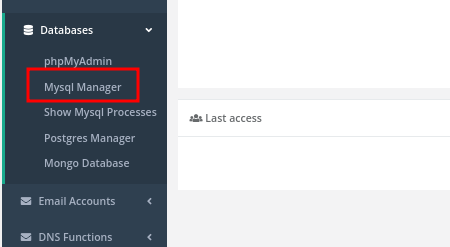
Step 3: Compress the Files on your computer
- You now need to compress all your WordPress files to to one file, like a .zip file or .tar.gz or any other valid compression.
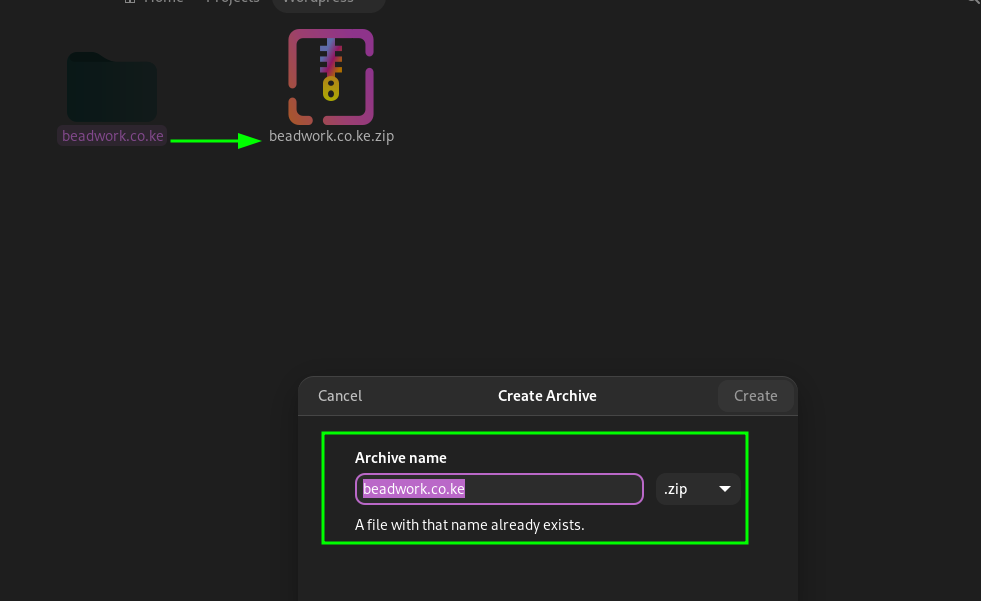
Step 4: Upload WordPress to the Server
- You can upload the compressed WordPress ZIP file using CWP’s File Manager or via FTP.
- From the user panel on the left side pane on the window, go to File Management->File Manager and click on File Manager
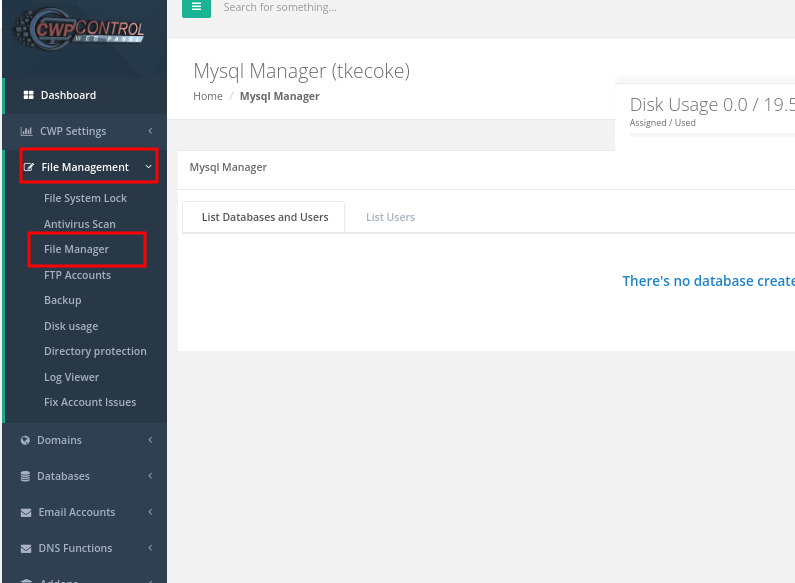
- You will see a window with the server’s file system files. Since this is a user panel, you will be shown files that are in the user’s home directory. These will include the user’s public_html and addon/subdomain folders
- Click on public_html to enter the domain’s root folder, otherwise click on the addon/subdomain folder for the domain/subdomain that you want to deploy WordPress on.

- While in public_html or the addon/subdomain, click on upload button at the top of the window.

- You will be presented with an upload window, where you drag and drop a file to uplaod or choose the file to upload from your computer. We are uploading the WordPress zip file that you had compressed.
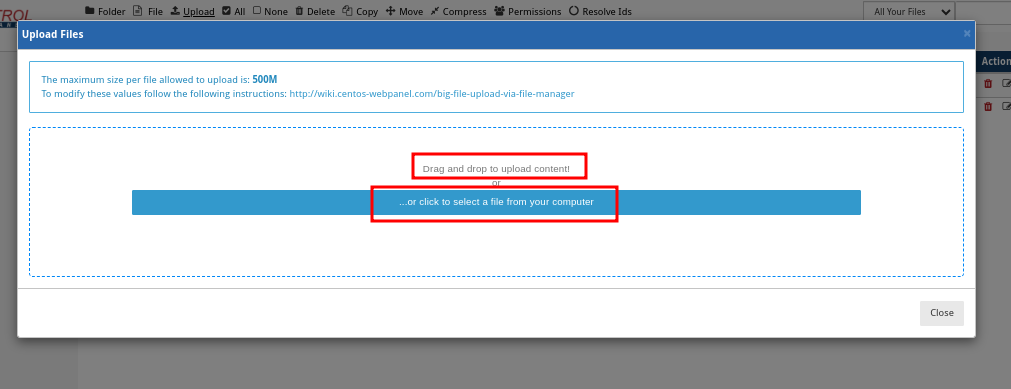
- Drag and drop or select the file to upload it. Give it time to upload
- Extract the ZIP file. close the uploaded and go back to public_html where you uploaded the file and right click on the file and select Decompress and confirm the decompression.

- After extraction, move the contents from the
wordpressfolder into the public_html directory (if they are not already there). In my case, I will move contents of beadwork to public_html - Go inside the extracted folder and use the Select All option at the top of the window to select everything.

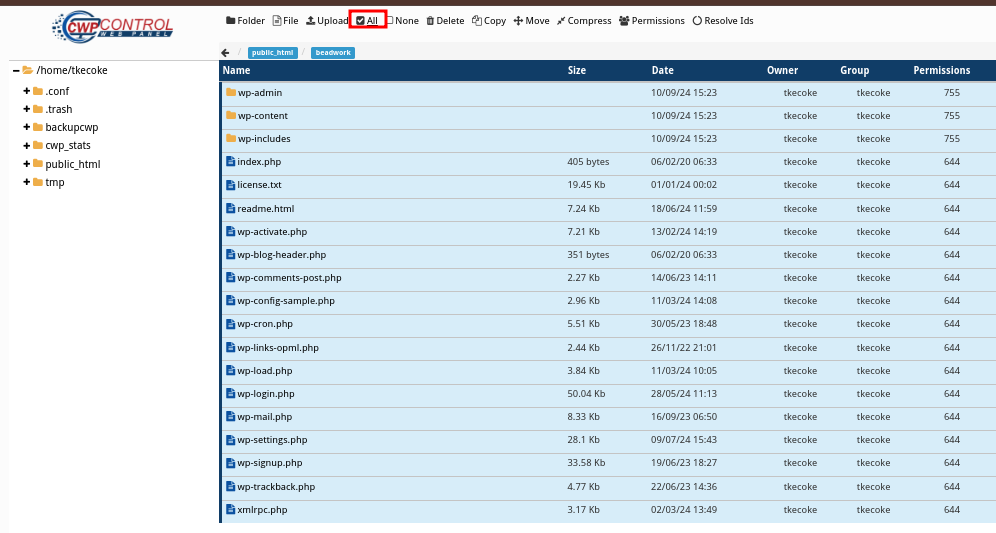
- Click on Move option found at the top of the widow, then, in the resulting box, you will a section for New Path. Expend the boxes until you reach your new destination then click on it, then click on Move
- Give them time to move.
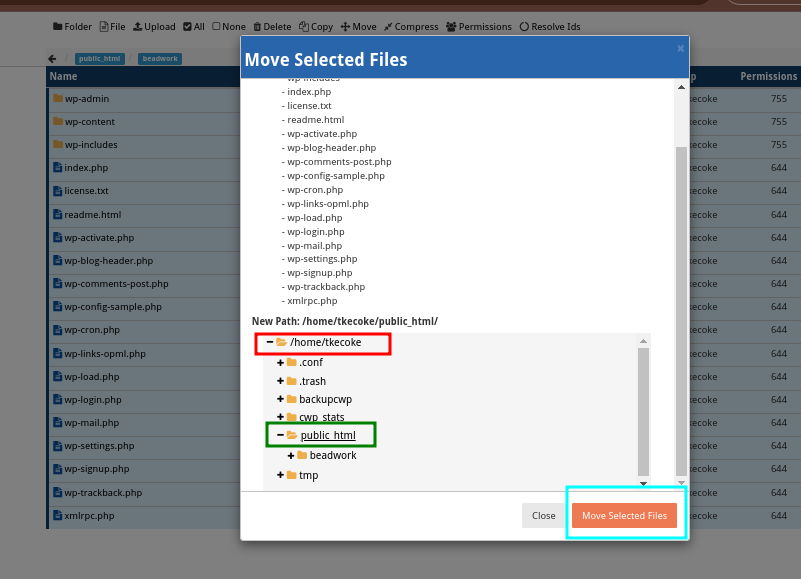
Step 5: Configure WordPress
- Navigate to the public_html or whichever directory and find the file named
wp-config.php - Right-click and rename it and click on Edit Content
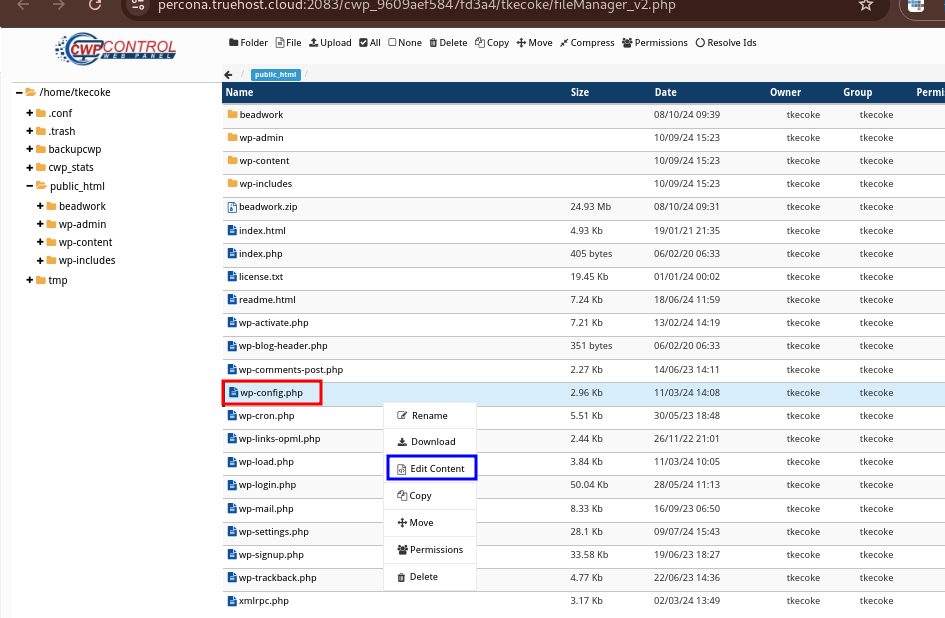
- Find the section of the file that has database details then carefully edit them to match the database that you created in step 3 of this guide.
- You will edit the DB_NAME, DB_USER, DB_HOST aand also set DB_HOST to localhost, if not set already then click on Save Changes.
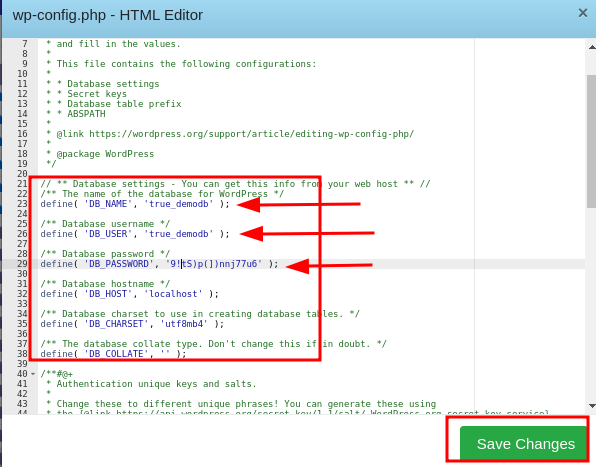
Step 6: Set Correct File Permissions
- Ensure that the WordPress files have the correct file permissions to avoid issues with uploads, plugin installations, and updates. This will mostly be the case, if you uploaded WordPress as guided in this article.
Step 7: Import DB file in phpMyAdmin
- Other than WordPress files, you also have a database in .sql format, which you want to upload to the server. You can do that using these steps.
Step 8: Update home_url and site_urls in phpMyAdmin
- Also you need to update the home_url an site_url values of your database to match your domain name/subdomain
- Go to the left side pane and find SQL Services->phpMyAdmin and click on your website’s database
- Locate the options table. I may be called wp_options or if you have a custom database prefix, it could be called different, even though it has the name options. In my case it is wpte_demodb
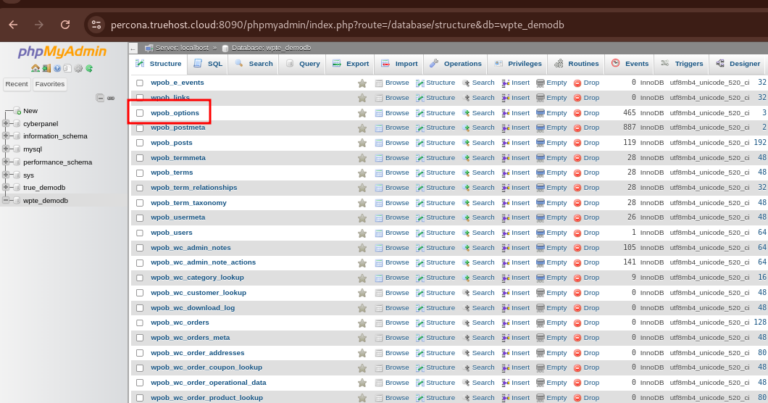
- Click on the table and locate a locate rows called siteutl and home
- Click on Edit buttons besides each of them.
- Modify the URLs; delete what is there and replace with the full URLs if the domain/subdomain that has your website. I will remove https//beadwork.co.ke & replace with https://wptest.truehost.cloud.
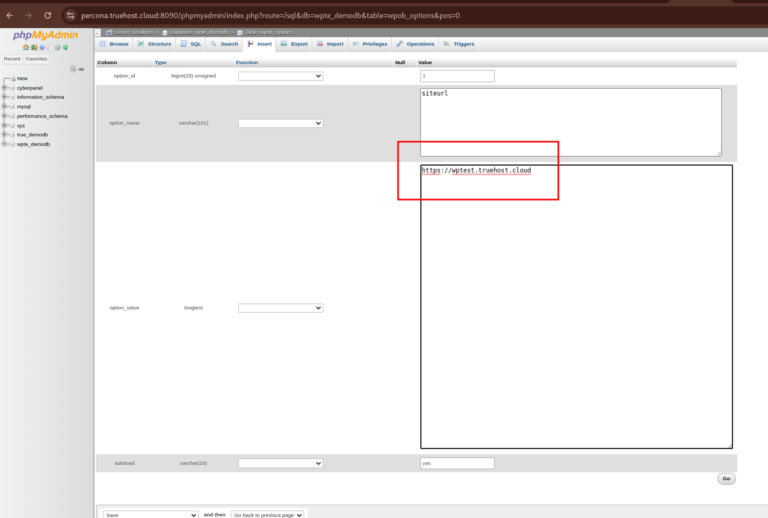
Step 9: Fix Permalinks in WordPress structure
- You will need to access WordPress admin dashboard.
- If you have forgotten your logins, please reset them as guided here
- Once logged in, Go to Settings > Permalinks.
- Set the permalink structure to Postname and click Save Changes
- If the permalink is already Postname. ensure to just click on Save Changes, anyway.
Step 10. Access your domain on your browser to see the website
In case you face a challenge, please check with our support team .